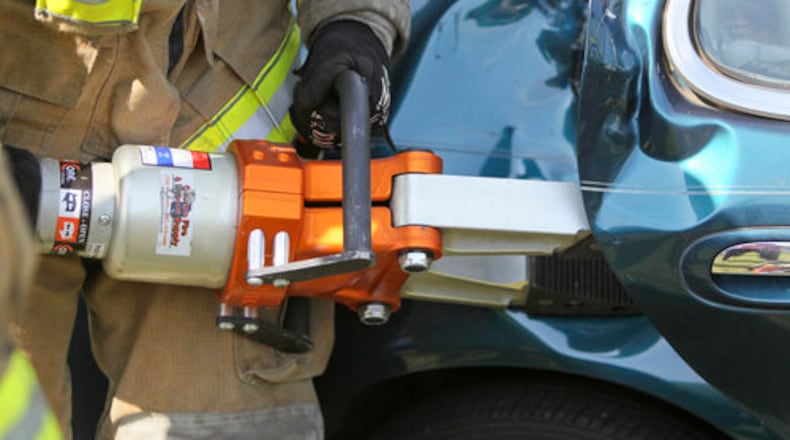A device that was engineered in the 1960s has become indispensable in the face of devastating fires and crashes.
The Jaws of Life has been used in thousands of emergency situations to assist firefighters. The machines are hydraulic tools also known as cutters, spreaders and rams that are used to pry open vehicles in accidents in which a victim may be trapped.
Here are five other things you may not have known about the life-saving devices, according to Fire Rescue 1, an information hub used by firefighters and fire departments.
A man name George Hurst invented the hydraulic rescue tools.
Hurst, a Pennsylvania health physicist and educator, patented the first known Jaws of Life in 1961 after he witnessed rescue crews take more than an hour to extricate stock car drivers from crashed cars.
Saws were used most often before the Jaws of Life were invented.
Rescuers typically used circular saws to cut open car frames.
There were several drawback to using saws exclusively:
— Traditional saws can cause sparks, increasing the possibility for fire and explosion
— The tools can be cumbersome and take longer for rescue, exacerbating the probability of injury
— They’re noisy, which just adds to the stress and strain a victim might be enduring
The key to their usage: fluid.
Because they are “hydraulic” tools, the Jaws of Life are aided by fluid. Most hydraulic equipment uses some sort of incompressible fluid to help create optimal force. Oil can be used in many types of hydraulic equipment, but because oil is extremely flammable, the Jaws of Life typically use phosphate ester fluid, which is non-flammable and does not conduct electricity.
The tool became an essential rescue device due to its speed.
The Jaws of Life tool uses a piston system, similar to a car engine. A gasoline or electrical power source pushes hydraulic fluid into the first piston, which then pushes down the second piston and applies immense pressure into the tool quickly. Rather than an hour or more extricating a victim, the Jaws of Life can remove a car roof in roughly two minutes.
There are four types of Jaws of Life tools.
Spreaders: Hydraulic spreaders are primarily used for compressed car frames and other damaged and collapsing structures. Like a pair of reversed scissors, spreaders start in a closed position and apply outward force, moving apart steel and fiberglass frames with ease, giving victims the space to be removed from a hazard.
Cutters: A more efficient version of the old-school circular saws and the opposite of spreaders, cutters operate like scissors on steroids. Using immense hydraulic pressure, they cut through metals to remove damaged and dangerous obstructions, allowing openings for firefighters to extricate victims.
Rams: While creating openings are important, there are times when a firefighter needs to dislodge parts of wreckage, like a steering column or a dashboard. That’s where rams come in, where a sturdy metal alloy rod is pressed forward to punch or ram apart sections of an accident that may be pinning a victim down and preventing their extrication.
Combination Tools: Instead of carrying multiple tools around, combination tools allow firefighters to use one device to both cut and spread damaged areas and extricate victims. A combination tool can shave precious seconds off a rescue, lessening the chance of harm or stress to a victim.
About the Author
Keep Reading
The Latest
Featured


